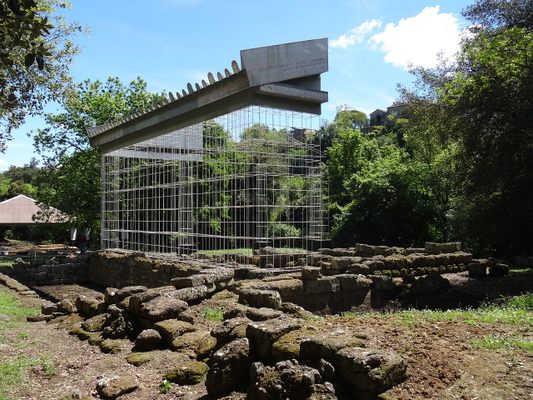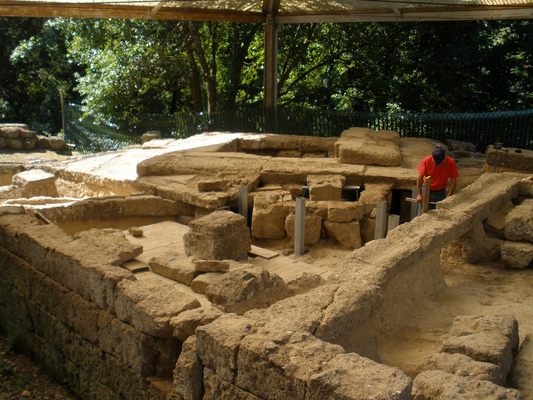About
Only 17 km northwest of the Eternal City stand the ruins of the rival that almost snuffed out early Roman civilization, long before Caesar or Augustus were born.
The great Etruscan city-state of Veii — the big trading power on the Tiber River for centuries — now consists of broken walls, grave-mounds, and rock-cut tombs painted with ancient frescoes.
Veii stands on a volcanic plateau between two streams, at the junction of which stands the "arx" or Etruscan citadel, now call the Piazza d'Armi ("military square"). The city was wiped out by the Romans in 396 BC after a decade-long war.
While much of Etruscan culture is lost to us, visitors to Veio Regional Natural Park can still find plenty to see and wonder at, including the town gates or Porta Ponte Sodo (5th century BC), the Temple of Apollo (7th century BC), the Tomb of the Roaring Lions, and the Tomb of the Ducks (also 7th century BC), which is Italy's oldest painted tomb.
In addition, the oak-filled park contains notable Roman-era structures, such as the Villa of Livia, as well as the medieval village of Isola Farnese.
But the tombs and their secrets attract more than archaeologists and tourists to the Veii region. Tombaroli — tomb raiders — come in the night to loot the graves of the long-dead, pre-Roman people of Italy.
Related Tags
Know Before You Go
By car
From the North: A1 motorway; Fiano Romano exit. Follow road signs to Capena and then Morlupo. From the South: GRA (Rome ring-road), exit 6 (Via Flaminia), exit 3 (Via Cassia) or exit 5 (Via Cassia Veientana). All three roads cross the park.
By train
The park can be reached from the Piazzale Flaminio station, Roma Nord line to Civita Castellana-Viterbo; or metropolitan railway San Pietro La Storta, La Giustiniana, Castelluccia and La Storta stations Piazzale Flaminio- Prima Porta railway line and Rome-Viterbo FM3 line; stops in Due Ponti, Grottarossa, Saxa Rubra, Prima Porta, Montebello, Riano, Sacrofano, Castelnuovo di Porto and Morlupo
By bus
COTRAL Lepanto terminus, various buses goalong the Via Cassia and Via Flaminia; Saxa Rubra terminus, buses go along the Via Flaminia and Via Cassia bis.
Flavors of Italy: Roman Carbonara, Florentine Steak & Venetian Cocktails
Savor local cuisine across Rome, Florence & Venice.
Book NowPublished
August 8, 2016

























